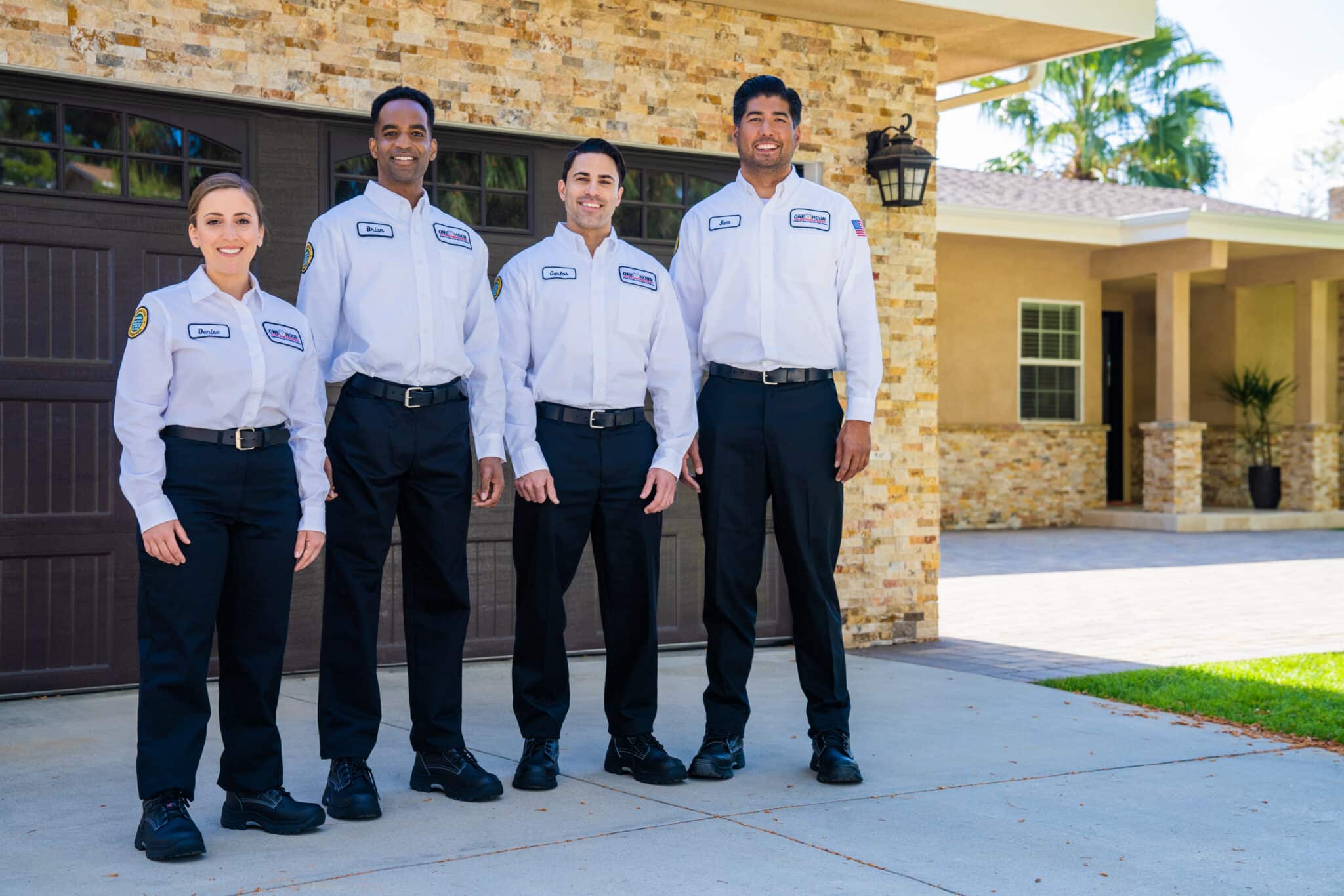Have you ever wondered how variable-speed motors can transform your home’s comfort and efficiency?
Variable speed motors are a revolutionary advancement in motor technology, capable of adjusting their speed to match the required load.
Unlike traditional single-speed motors, which operate at full capacity regardless of demand, variable-speed motors modulate their performance to provide optimal energy use and enhanced functionality.
Historical Context and Development of Variable-speed Motors
The development of variable-speed motors dates back to the late 20th century, driven by the need for more efficient and versatile motor systems.
Initially used in industrial applications, the technology has evolved significantly, becoming a staple in residential HVAC systems and home appliances.
The push for energy efficiency and smart home integration has accelerated the adoption of variable-speed motors, making them a key component in modern home systems.
Benefits of Variable Speed Motors
Energy Efficiency
Are you looking to reduce your energy bills while maintaining comfort in your home? Variable-speed motors are a perfect solution. They adjust their speed to the actual demand, using only the necessary amount of energy.
This contrasts sharply with single-speed motors that run at full power, regardless of the required load. By optimizing energy use, variable-speed motors can significantly lower your utility costs and contribute to a more sustainable environment.
Enhanced Comfort
Variable-speed motors provide a superior level of comfort in your home.
They can maintain a consistent temperature by gradually adjusting their speed, eliminating the sudden on-and-off cycles associated with single-speed motors. This continuous operation ensures even distribution of heating or cooling, reducing hot and cold spots and creating a more comfortable living space.
Noise Reduction
Are you tired of the loud noise from your HVAC system starting up?
Variable-speed motors operate much more quietly compared to their single-speed counterparts.
Since they often run at lower speeds, the noise levels are significantly reduced, leading to a quieter and more peaceful home environment. This is especially beneficial in residential areas where noise can be a disturbance.
How Variable Speed Motors Work
Basic Mechanics
Curious about the inner workings of variable-speed motors? At their core, these motors use advanced electronic controls to adjust the speed and torque according to the load requirements.
This precise control allows them to operate at the most efficient speed, unlike single-speed motors that only have “on” and “off” settings. By modulating speed, these motors can match the power output to the exact needs of the system they are driving, whether it’s an HVAC unit or a home appliance.
Technology Behind Variable Speeds
The technology that enables variable-speed motors to function efficiently includes the use of inverters and microprocessors. Inverters convert the fixed-frequency power supply into a variable-frequency output, allowing the motor to change speeds seamlessly.
Microprocessors continuously monitor system performance and adjust the motor speed accordingly. This technology not only optimizes energy use but also enhances the durability and lifespan of the motor by reducing wear and tear from frequent starts and stops.
Applications in Home Systems
HVAC Systems
Did you know that variable-speed motors can significantly enhance the performance of your HVAC system?
These motors are commonly used in heating, ventilation, and air conditioning systems to provide precise temperature control and improved energy efficiency.
By adjusting their speed based on the cooling or heating demand, they maintain a consistent indoor climate, leading to greater comfort and reduced energy consumption.
Home Appliances
Variable speed motors are not just limited to HVAC systems. They are also used in a variety of home appliances, such as washing machines, refrigerators, and dishwashers.
In these applications, variable speed motors offer several advantages, including quieter operation, improved efficiency, and longer appliance life. For example, in washing machines, they provide more effective washing cycles by adjusting the motor speed to the load size and type of fabric.
Integration with Smart Home Systems
One of the exciting aspects of variable speed motors is their compatibility with smart home systems. These motors can be integrated into home automation platforms, allowing homeowners to control and monitor their performance remotely.
This integration not only enhances convenience but also enables more precise energy management. For instance, you can program your HVAC system to adjust the motor speed based on your daily schedule, ensuring optimal comfort and efficiency.
Energy Efficiency and Savings
Comparing Energy Use
Have you ever wondered how much energy you could save by switching to variable-speed motors?
Compared to single-speed motors, speed motors use significantly less energy by adjusting their speed to match the current demand. This adaptability means they only consume the power necessary for the task at hand, rather than running at full capacity all the time.
Studies have shown that variable-speed motors can reduce energy use by up to 50%, translating into substantial savings on your utility bills.
Long-term Savings Analysis
While the initial cost of speed motors might be higher than single-speed alternatives, the long-term savings make them a worthwhile investment.
Over time, the reduction in energy consumption results in lower operating costs, which can offset the higher upfront price.
Additionally, these motors tend to have a longer lifespan and require less maintenance due to reduced wear and tear, further enhancing their cost-effectiveness.
Environmental Impact
Investing in variable-speed motors is not just good for your wallet; it’s also beneficial for the environment. By using less energy, these motors help reduce greenhouse gas emissions and lower your carbon footprint.
As energy efficiency becomes increasingly important in combating climate change, these motors offer a practical solution for homeowners looking to make their homes more eco-friendly.
Installation of Variable Speed Motors
Step-by-Step Installation Guide
Interested in installing the speed motor in your home system? Here’s a step-by-step guide to help you understand the process:
- Assess Compatibility: Ensure that your existing system is compatible with a variable-speed motor. This might involve checking the specifications of your HVAC or appliance.
- Gather Tools and Materials: You’ll need basic tools like screwdrivers, wrenches, wire strippers, and the appropriate mounting hardware. Safety gear such as gloves and goggles is also essential.
- Turn Off Power: Safety first! Always turn off the power supply to the system where you’ll be installing the motor.
- Remove the Old Motor: Carefully detach the existing motor from your system. This usually involves disconnecting wiring and unscrewing the motor from its mount.
- Install the New Motor: Mount the variable speed motor in place of the old motor. Ensure that it is securely fastened.
- Connect Wiring: Follow the wiring diagram provided with your new motor. Connect the wires accordingly, ensuring all connections are secure and correct.
- Configure Controls: If your motor comes with a control unit, install and configure it according to the manufacturer’s instructions.
- Test the System: Once everything is connected, restore the power and test the motor. Make sure it operates correctly at various speeds.
- Final Adjustments: Make any necessary adjustments to the motor’s settings to ensure optimal performance.
Professional vs. DIY Installation
Deciding whether to install a variable speed motor yourself or hire a professional? While DIY installation can save money, it requires a good understanding of electrical systems and mechanical skills.
For those less experienced, hiring a professional ensures the job is done safely and correctly. Professionals have the expertise to handle any complications that might arise, ensuring your system operates efficiently.
Safety Considerations
When installing speed motors, safety should be your top priority. Always disconnect the power before starting any electrical work. Use the correct tools and wear protective gear to prevent injuries.
Follow the manufacturer’s instructions carefully, and if in doubt, consult a professional. Improper installation can lead to motor failure, system damage, or even electrical hazards.
Maintenance Tips for Variable-Speed Motors
Routine Checks
Keeping your variable speed motor in top condition requires regular maintenance. Here are some routine checks to perform:
- Visual Inspection: Regularly inspect the motor for signs of wear and tear, such as frayed wires or loose connections.
- Cleanliness: Ensure the motor and its surrounding area are free from dust and debris, which can affect performance. Use a soft brush or vacuum to clean the motor housing.
- Lubrication: Check the motor’s bearings and apply lubrication as needed. This helps reduce friction and extend the motor’s lifespan.
- Tighten Connections: Periodically check and tighten any loose electrical connections to prevent arcing or overheating.
- Monitor Performance: Keep an eye on the motor’s performance. Unusual noises, vibrations, or changes in efficiency can indicate issues that need addressing.
Troubleshooting Common Issues
Despite regular maintenance, issues can arise. Here are some common problems and their solutions:
- Motor Won’t Start: Check the power supply and ensure all connections are secure. Inspect the fuse or circuit breaker and replace it if necessary.
- Overheating: Ensure the motor is not obstructed and that it has proper ventilation. Check for signs of overloading and reduce the load if needed.
- Noisy Operation: Noise can be caused by loose parts, misalignment, or worn bearings. Inspect and tighten any loose components, and replace bearings if they are worn out.
- Inconsistent Speeds: This could be due to a faulty control module or sensor. Verify that all control settings are correct and replace any defective parts.
Professional Maintenance Services
While DIY maintenance is useful, professional services can provide thorough inspections and repairs. Regular visits from a certified technician ensure that your variable speed motor operates efficiently and extends its lifespan.
Professionals have the tools and expertise to detect issues that might not be obvious during a routine check, preventing minor problems from becoming major repairs.
Cost Considerations
Initial Investment
Wondering about the cost of speed motors?
While the initial investment for a variable-speed motor is higher than that for a single-speed motor, it is important to consider the long-term benefits.
The price can vary depending on the brand, model, and application, but generally, homeowners can expect to pay anywhere from a few hundred to over a thousand dollars for a high-quality variable-speed motor. This upfront cost includes not only the motor itself but also potential installation fees if you opt for professional installation.
Long-term Cost Benefits
The higher initial investment in variable speed motors is offset by significant long-term cost benefits. These motors are more energy-efficient, reducing your monthly utility bills.
Over time, the savings on energy costs can surpass the initial price difference between variable-speed and single-speed motors. Additionally, these motors often have a longer lifespan due to their ability to operate at lower speeds, which reduces wear and tear.
Financing Options
For homeowners concerned about the upfront costs, financing options are available. Many manufacturers and HVAC service providers offer financing plans that allow you to spread the cost of the motor and installation over several months or years.
This makes it easier to manage the expense while still reaping the immediate benefits of improved efficiency and comfort. Additionally, there may be rebates or incentives available from local utility companies or government programs that can help offset the initial cost.
Comparison with Single-Speed Motors
Performance Comparison
How do variable-speed motors stack up against single-speed motors in terms of performance?
Variable speed motors offer superior performance due to their ability to adjust speed according to the demand. This results in more precise temperature control, better airflow, and overall enhanced efficiency.
Single-speed motors, on the other hand, operate at a fixed speed, which can lead to inconsistent performance and higher energy consumption as they constantly switch on and off to maintain the desired temperature.
Cost vs. Benefit Analysis
While variable speed motors come with a higher upfront cost, their long-term benefits often outweigh the initial expense. Here’s a breakdown:
- Energy Savings: speed motors can reduce energy use by up to 50%, leading to lower utility bills over time.
- Longevity: The ability to run at lower speeds means less wear and tear, extending the motor’s lifespan and reducing replacement costs.
- Comfort: Continuous operation ensures a more stable indoor environment, improving comfort levels significantly.
Single-speed motors, though cheaper initially, can incur higher operating costs and may require more frequent replacements, making them less economical in the long run.
Real-world Examples
Consider a homeowner in Bluffton who replaced their single-speed HVAC motor with a variable-speed motor. They reported a noticeable decrease in their energy bills and a more consistent indoor temperature, enhancing their comfort and overall satisfaction with their HVAC system.
Similarly, in Hilton Head, a homeowner experienced quieter operation and improved air quality after making the switch, further showcasing the tangible benefits of speed motors.
Impact on HVAC Systems
Efficiency Improvements
Are you looking to enhance the efficiency of your HVAC system?
These motors can significantly boost the efficiency of your heating and cooling systems. By adjusting the motor speed to match the heating or cooling demand, these motors ensure that your HVAC system operates at optimal efficiency.
This reduces energy consumption, lowers utility bills, and minimizes wear and tear on your equipment, leading to fewer repairs and a longer lifespan.
Comfort Enhancements
Variable speed motors are not just about efficiency; they also greatly improve comfort. These motors provide consistent and precise temperature control, eliminating the fluctuations often experienced with single-speed motors.
By maintaining a steady airflow and temperature, they create a more comfortable indoor environment. Additionally, variable speed motors reduce humidity levels, making your home more comfortable in hot and humid conditions.
Variable-Speed Motors in Bluffton, Beaufort, and Hilton Head
Local Availability
Variable speed motors are increasingly popular in Bluffton, Beaufort, and Hilton Head, reflecting a growing demand for energy-efficient home solutions.
Local HVAC suppliers and home improvement stores across these areas stock a variety of speed motors suitable for different applications. Whether you’re looking to upgrade your HVAC system or enhance your home appliances, you can find the right products and services in these locations.
Case Studies and Customer Testimonials
Bluffton
A Bluffton family upgraded their HVAC system with a variable-speed motor and experienced a dramatic reduction in their energy bills. They noted improved indoor air quality and more consistent temperatures throughout their home.
Beaufort
In Beaufort, a homeowner reported significant savings on their energy bills after switching to a variable-speed motor. They also appreciated the quieter operation and more stable indoor climate.
Hilton Head
A Hilton Head resident integrated variable-speed motors into their smart home system, allowing for seamless control and monitoring of their HVAC performance. This integration led to increased convenience and efficiency, enhancing the overall comfort of their home.
FAQs
- What are the main benefits of variable-speed motors?
Variable-speed motors offer enhanced energy efficiency, quieter operation, and more consistent temperature control compared to single-speed motors. They also have a longer lifespan due to reduced wear and tear.
- Can I install a speed motor myself?
While it is possible to install a variable-speed motor yourself, it is recommended to hire a professional to ensure proper installation and optimal performance. Professionals can handle complex wiring and configuration, reducing the risk of errors.
- How do variable-speed motors save energy?
Variable speed motors adjust their speed to match the current demand, using only the necessary amount of energy. This reduces overall energy consumption, leading to lower utility bills and a smaller carbon footprint.
- Are variable-speed motors compatible with smart home systems?
Yes, many speed motors can be integrated with smart home systems, allowing for remote control and monitoring. This integration enhances convenience and enables more precise energy management.
- What maintenance is required for variable-speed motors?
Routine maintenance for the motors includes regular visual inspections, cleaning, lubrication, and tightening of electrical connections. Periodic professional maintenance is also recommended to ensure long-term performance and efficiency.
Have you experienced the benefits of variable-speed motors in your home? Share your thoughts and experiences in the comments below!











